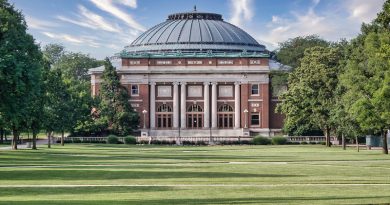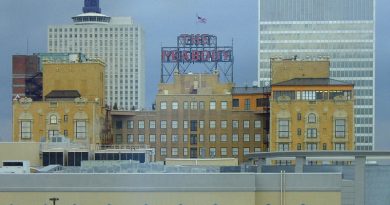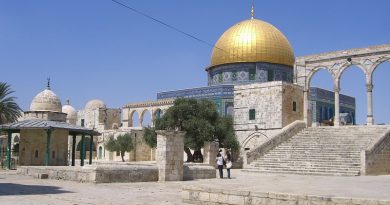Vienna Destination Guides
Vienna
Vienna is the capital and largest city in Austria with a population of 1.8 million. The city lies in eastern Austria along the banks of the Danube River, close to the borders of the Czech Republic, Slovakia and Hungary. The city’s history dates back to early Celtic and Roman settlements, including the Roman established military camp, Vindobona. It is now known however for its majestic Medieval and Baroque architecture, remnants of the city’s role as capital of the Austro-Hungarian Empire.
Vienna is sometimes known as the City of Music, due to the vast number of great musicians and composers who were born there or called the city their home. The music that was produced there played an essential role in the development of European music, from the Classical Viennese style through the early 20th century. Visiting Vienna therefore means experiencing the works of musicians such as Mozart, Beethoven and Strauss, in one of Vienna’s many music venues. Today, the classical music scene is contrasted by the impressive jazz and rock venues that Vienna has to offer.
Brief History
It is believed that Vienna has been continuously inhabited since 500BC, when the area which is now Vienna was settled by the Celts. The city was then fortified by the Romans in 15BC to serve as a guard against Germanic tribes.
In 976, Leopold I of Babenberg became count of a 60-mile district centring on the Danube on Bavaria’s eastern frontier, known as the Eastern March. Each subsequent Babenberg leader expanded this area east along the Danube eventually encompassing Vienna and the land east of the city. The official family residence was moved in 1145 to Vienna, where it remained. The 1400s saw Vienna become the resident city of the Habsburg dynasty and the de facto capital of the Holy Roman Empire. This propelled the development of the city’s reputation as a cultural centre for arts, music and science.
As the capital of the Austrian Empire in the early nineteenth century, Vienna played an influential role in European and world politics. The latter half of the nineteenth century saw Vienna become the capital of the Austro-Hungarian Empire and undergo enormous expansion as suburbs were incorporated into the city’s limits.
The early twentieth century saw Vienna play host to figures such as Sigmund Freud, Adolf Hitler, Leon Trotsky, Joseph Tito and Joseph Stalin, who contributed to the trends of social and political thought that came out of Vienna at this time. Even within Austria, Vienna was seen as a centre of socialism, even providing the backdrop of the Austrian Civil War of 1934.
Along with the rest of Austria, Vienna became a part of Nazi Germany after the Anschluss of 1938. The city lost its status as a capital as Austria ceased to exist as an independent state. The 1945 Vienna Offensive launched by the Allies ultimately forced Germany to release its hold on Austria, but only after extensive bombing destroyed the city’s infrastructure. Vienna was reinstated as the republic’s capital, but it was not until 1955 that the Soviets allowed Austria to regain full sovereignty.
Cash = Euro £1 approximately €1.41
Travel
Vienna International Airport is located approximately 20 kilometres from the city centre. Alternatively, Bratislava, the capital of Slovakia is only 60 kilometres east of Vienna. There are numerous buses every day which run between Airport Letisko Bratislava and Vienna International Airport.
Vienna offers a very comprehensive public transportation system which prides itself on being one of the most efficient in Europe. It consists of trams, buses, U-Bahn (underground) and S-Bahn (regional trains). There are 5 underground, 29 tram and 90 bus lines operating around Vienna, 24 of which are night lines (operating between 12.30am and 5.00am weekdays, and all night on weekends and public holidays). The services provided are very frequent and reliable. The U-Bahn is a speedy, reliable and inexpensive way of getting around the city. There are 5 lines; U1-U4 and U6 (there is no U5). S-Bahn trains operate between the city’s train stations and its suburbs or satellite towns.
Climate
Vienna’s climate exhibits traits of an oceanic climate, typified by warm summers and cool winters, but also of a humid continental climate, characterised by hot and often humid summers contrasted with cold, sometimes bitterly cold winters. Vienna therefore has warm summers, with some very hot periods, and relatively dry and cold winters, with average temperatures around freezing. Snow in the winter is not uncommon, but rare compared to Western and Southern regions in Austria. The spring and autumn months tend to be pretty mild. However, there is a fair chance of rain all year round.
Language
The national language of Austria is German and the local Viennese dialect is called Wienerisch. On the whole, the German spoken in Austria is relatively similar to that spoken in Germany, with minor differences in dialect, accent and vocabulary. However, wienerisch can be quite different from standard German, but most Austrians you might come across will be able to use standard German if need be. Additionally, English is very well taught in Austria, so English can be used, especially in places used to dealing with tourists.
Visas
Visas are not required for citizens of the EU, the European Economic Area, Switzerland, much of Eastern Europe, Israel, USA, Canada, the majority of Central and South American nations, Japan, Australia and New Zealand. This is the case as long as the trip does not exceed 90 days. All other nationalities, including Chinese and Russian, require a visa, which can be applied for at Austrian embassies.
Food
Viennese food has been influenced by the surrounding nations of France, Italy, Germany and Hungary.
- Apfelstrudel – A traditional Viennese dessert consisting of flaky pastry filled with apple, sugar, cinnamon and raisins. It is usually served warm, in slices, topped with powdered sugar or whipped cream. Can be found in almost any Viennese coffee shop or restaurant.
- Wiener Schnitzel – The national dish of Austria is a cutlet of veal or pork (known as Schweins Schnitzel) that is hammered very thin, coated in flour, egg and breadcrumbs and deep-fried. Traditionally, it is served with a salad in a sweetened vinaigrette dressing and potato salad or parsley potatoes. Today, it is commonly served with French fries or roasted potatoes. It is available in almost every Viennese restaurant and can be eaten hot or cold.
- Tafelspitz – Another traditional Austrian dish, influenced by the neighbouring German state of Bavaria, consists of very lean beef boiled in broth with spices and root vegetables. It is usually served with minced apples, a horseradish sauce and boiled potatoes.
- Kaiserschmarrn – Supposedly named after Kaiser Franz Joseph I who loved these caramelised pancakes. They differ from traditional Palatschinke (crepes) as they are made from a sweet batter made of flour, eggs, sugar, salt and milk, and baked in butter. The pancake is split with two forks into pieces while frying and the pancake pieces are sprinkled with powdered sugar. They are traditionally served with a hot plum compote, although various fruit compotes are offered today.
Top Things to See and Do in Vienna
- Stephansdom (St Stephen’s Cathedral) – No visit to Vienna is complete without a visit to St. Stephen’s Cathedral. Built in the 12th century, the cathedral has become a symbol of Vienna not only as the home of the Viennese Roman Catholic faith, but the Gothic architecture also symbolises Vienna’s rich history as a centre of culture and art. The monumental structure included four towers, the tallest of which is over 130 meters, making it one of the tallest churches in the world. The tower room boasts incredible views of Vienna. The impressive roof of Stephansdom is decorated with colourful tiles which are laid so as to create the Royal and Imperial double-headed eagle and the city of Vienna’s coat of arms. The tombs of many important and influential Austrian Emperors, Princes, Cardinals and Archbishops can also be found inside the cathedral. It is located in Stephansplatz, which lies in the geographical centre of Vienna and it surrounded by exclusive shopping districts. St Stephen’s Cathedral and the surrounding square can be reached by the Stephansplatz U-Bahn station on the U1 and U3 underground lines.
- Hofburg Imperial Palace – Hofburg is the ultimate symbol of Austria’s culture and heritage. The Palace was the official winter residence of the Habsburgs as they ruled from 1273 to 1918. Today, part of the palace serves as the official residence and workplace of the Austrian President. Built in the 13th century and expanded ever since, the palace has been home to some of the most powerful and influential people in European history, including monarchs and rulers of the Austro-Hungarian Empire. The Hofburg exhibits a vast scale and architectural diversity, which is a result of each ruler adding new sections over the centuries in accordance with the increasing power and size of the empire. The private apartments and state rooms of the Habsburg monarchy are open to the public, and the Palace’s numerous museums house collections which display the family’s passion for art. The Spanish Riding School, the Austrian Natural History Museum and the Austrian National Library are also located within the Hofburg Complex. It can be easily reached by U-Bahn, Tram and Bus.
- Schönbrunn Palace – Schönbrunn Palace is the former summer residence of the Habsburg family. With over 1000 rooms the Baroque palace is one of the most important historical, architectural and cultural monuments in Austria. The history of the palace and its gardens reflects the changing tastes and interests of the monarchy, and today it is included as a UNESCO cultural heritage site due to its historical significance, impressive furnishings and beautiful landscape. The rooms are mostly decorated in Rococo style, exhibiting walls and ceilings covered with gold leaf ornamentation and detailing, and the palace boasts incredibly lavish state and guestrooms. This palace saw a six-year-old Mozart perform in its Hall of Mirrors in 1772 and the Blue Chinese Salon was the site that Emperor Charles I signed his abdication of the crown in 1918, ending the 640-year-long Habsburg reign and the end of Austria’s monarchy. The public can view the palace interiors on guided tours, and are welcome to visit the gardens.
- Belvedere – The Belvedere is a historic building complex that consists of two Baroque palaces (Upper and Lower Belvedere), the Orangery and the Palace Stables. The Baroque park landscape in which the palaces are located is in south-eastern Vienna, and include fountains and sculptures across its gentle incline. The complex was built as a summer residence for Prince Eugene of Savoy during the seventeenth century following the successful conclusion of wars against the Ottoman Empire. Construction continued into the eighteenth century. Today the palaces house an extensive collection of both Austrian and international art dating from the Middle Ages to present day. The collection presents an overview of the development of art in Austria, and therefore a glimpse into the country’s history. The Belvedere gallery also houses the world’s largest collection of Gustav Klimt’s paintings and key works of French Impressionism.
- Donauturm – The Danube Tower is a 252 meter tower located near the northern bank of the Danube River in Vienna. Two high-speed elevators transport passengers to the tower’s viewing platform at 150 meters, each carrying up to 14 passengers to the platform in 35 seconds. The two revolving restaurants offer varied views over Vienna and the Danube River. During the summer months, the observation deck also includes a bungee-jumping site, with a protruding platform.
- Wiener Riesenrad – The Giant Ferris Wheel is almost 65 meters tall and located in Leopoldstadt. It was originally constructed with 30 gondolas in 1897 to celebrate the Golden Jubilee of Emperor Franz Josef I.
- Albertina – The Albertina is a museum in Vienna which boasts one of the largest print rooms in the world, with approximately 65,000 drawings and approximately 1 million old master prints. It also exhibits more modern graphic works, including architectural designs and photographs. The museum has also recently acquired significant collections of Impressionist and early-20th century art. The Albertina is located within the Hofburg Imperial Palace Complex.
- Mozarthaus Vienna – Mozart’s only remaining home in Vienna is Domgasse number 5, in which he lived between 1784 and 1787. He lived his life aware of the importance of outward appearances, so his first floor apartment was very grand, reflecting his status as a successful composer at the time when he resided here. It was while living at this address that he wrote some of his best compositions, including The Marriage of Figaro. Today, the entire building is now open to the public as a museum celebrating the renowned musician and composer; his creativity, family, friends and foes in late-Baroque Vienna.




